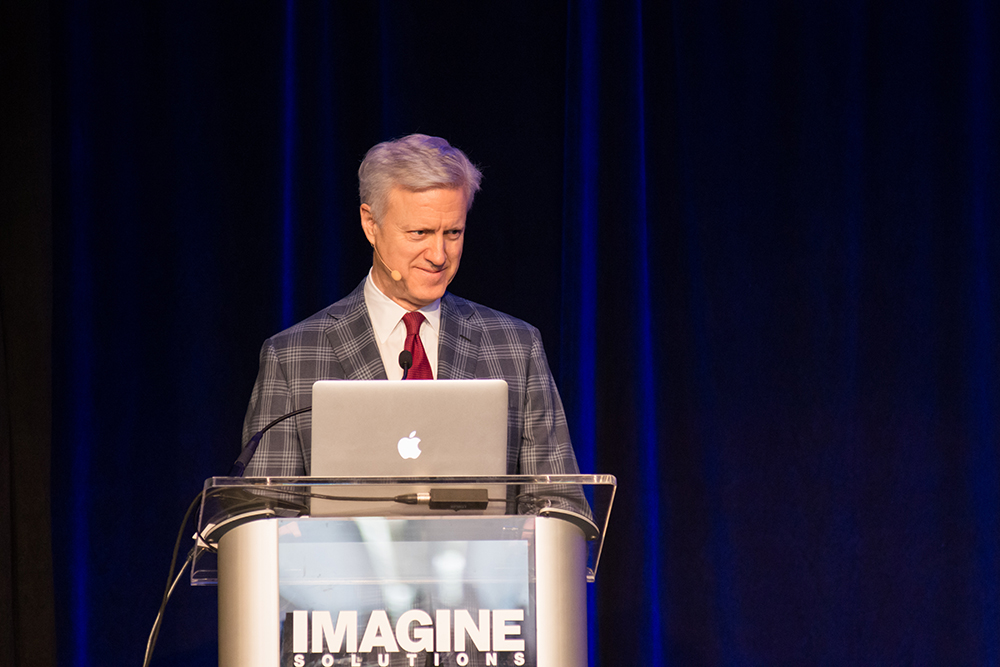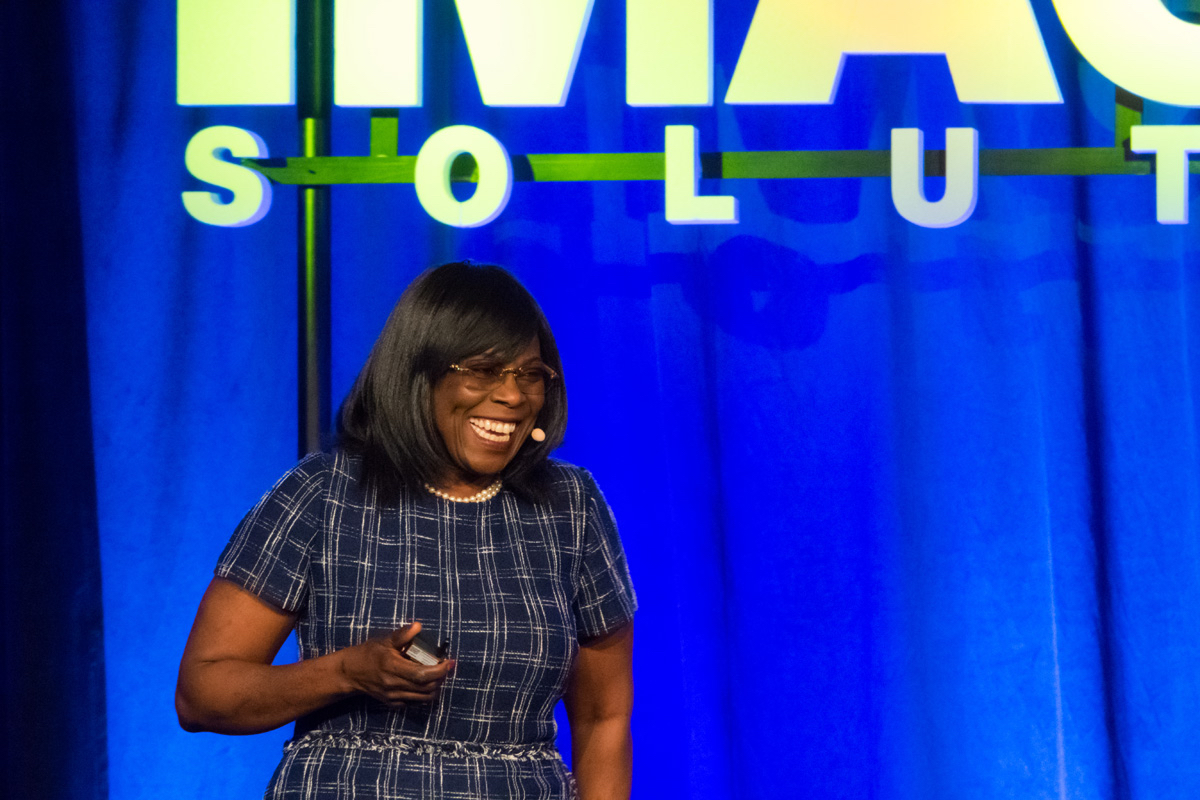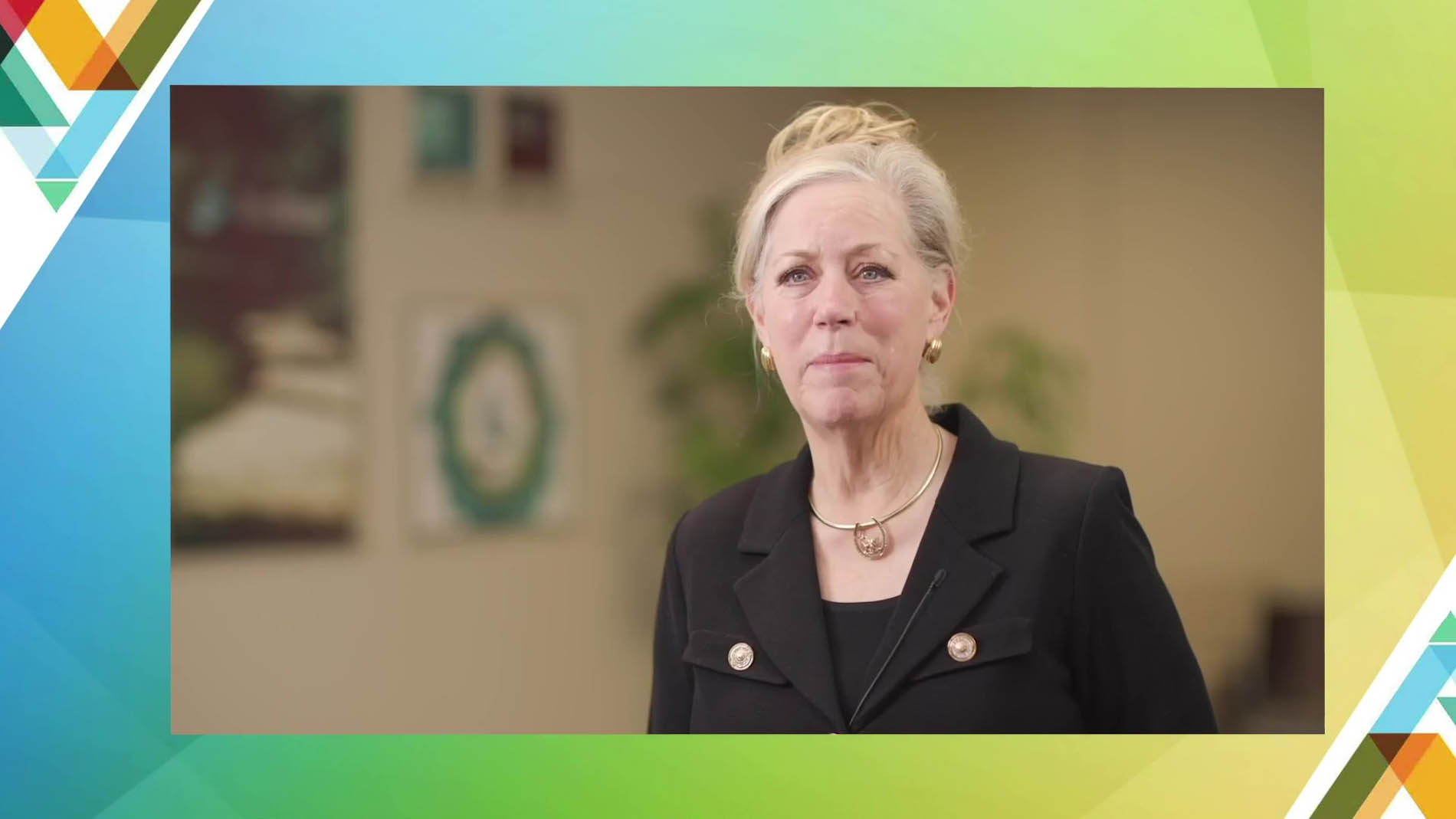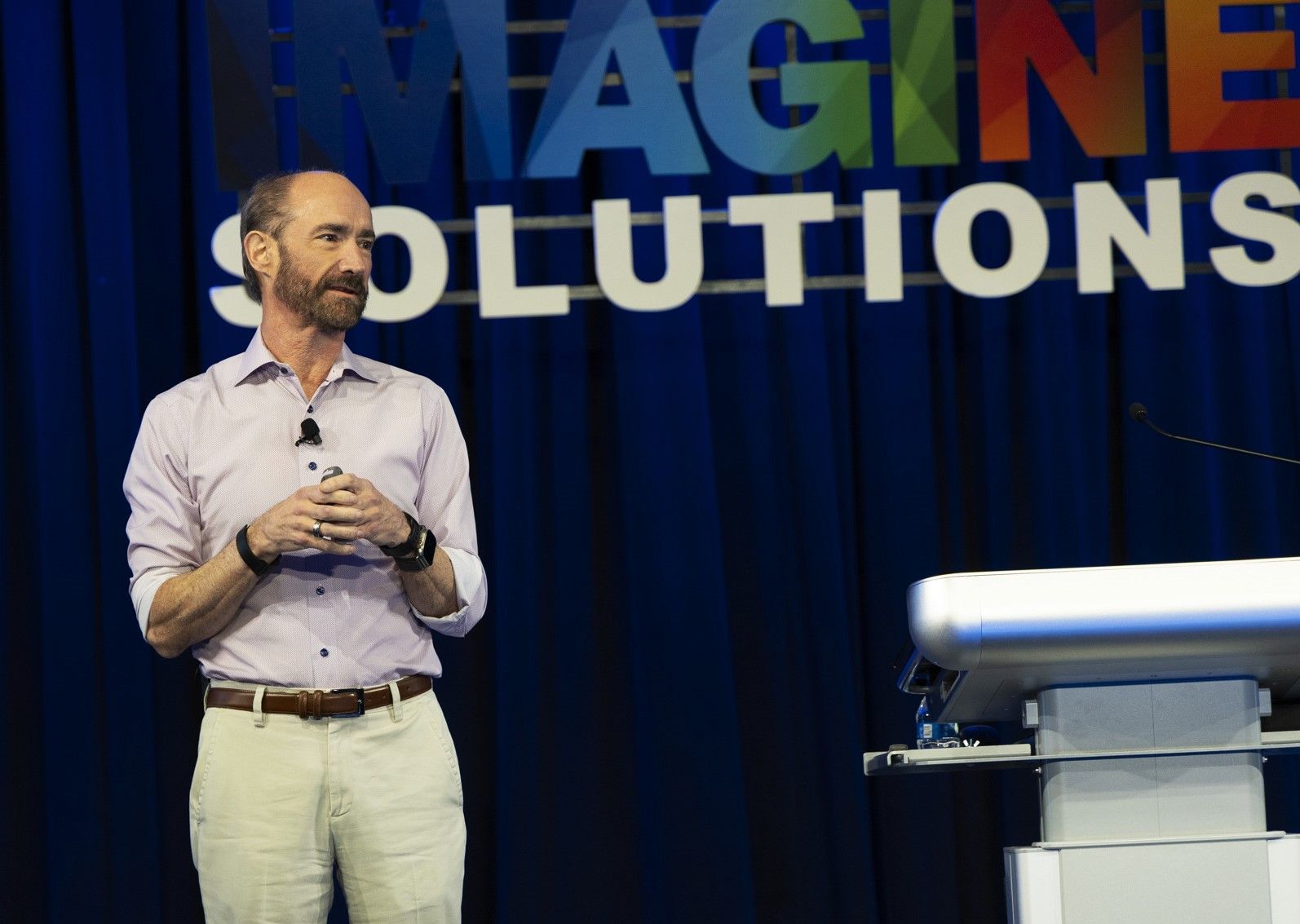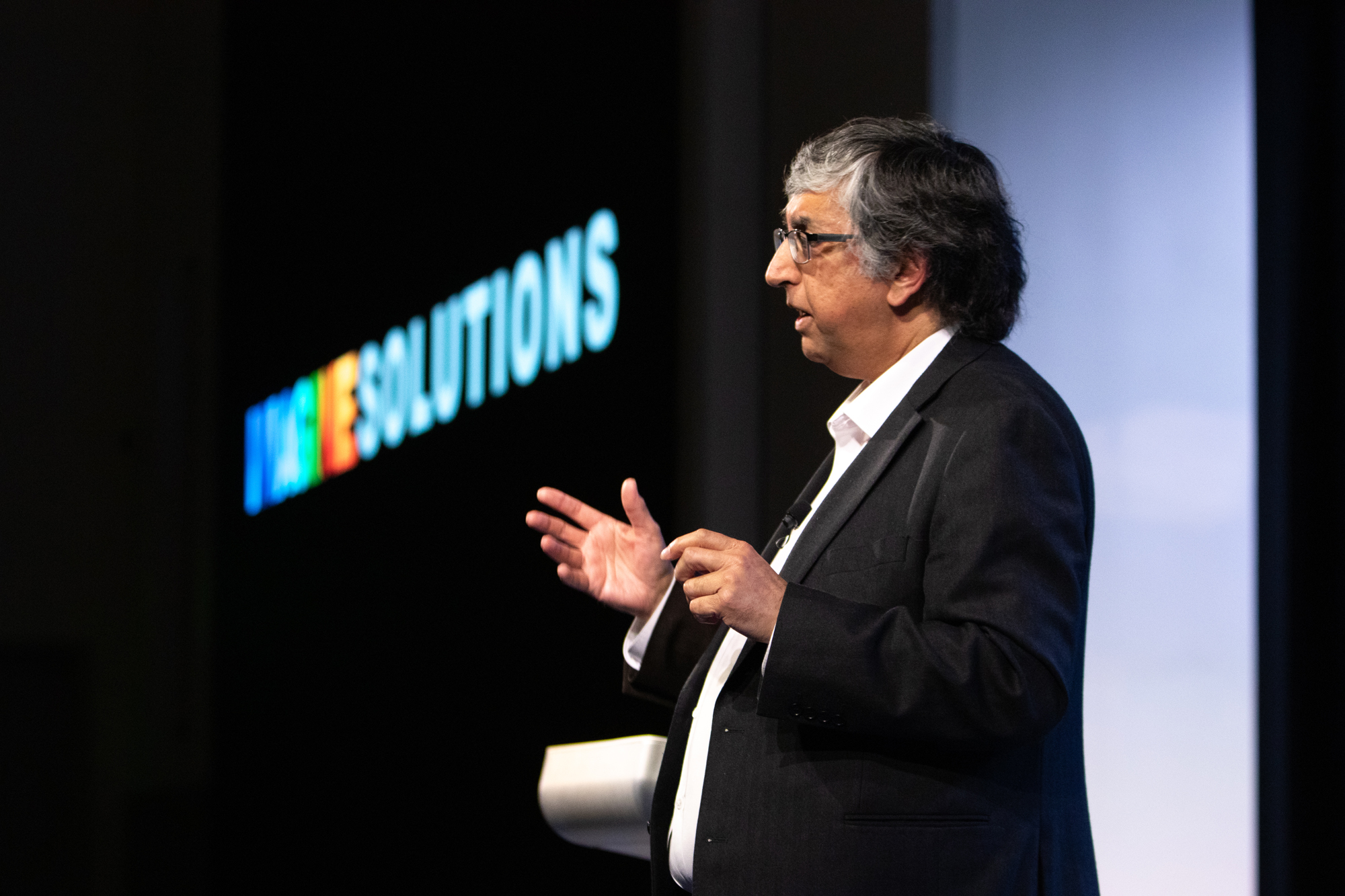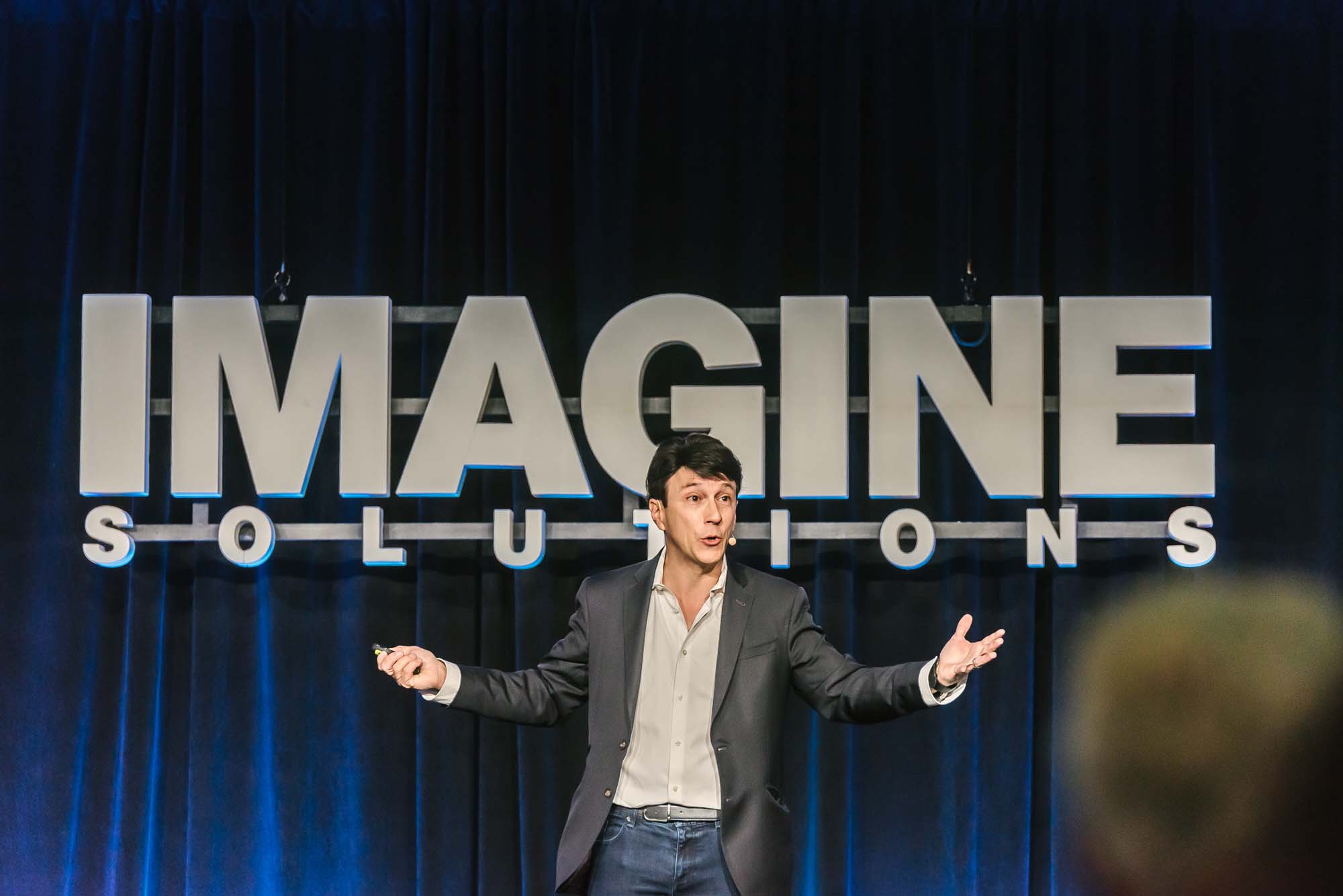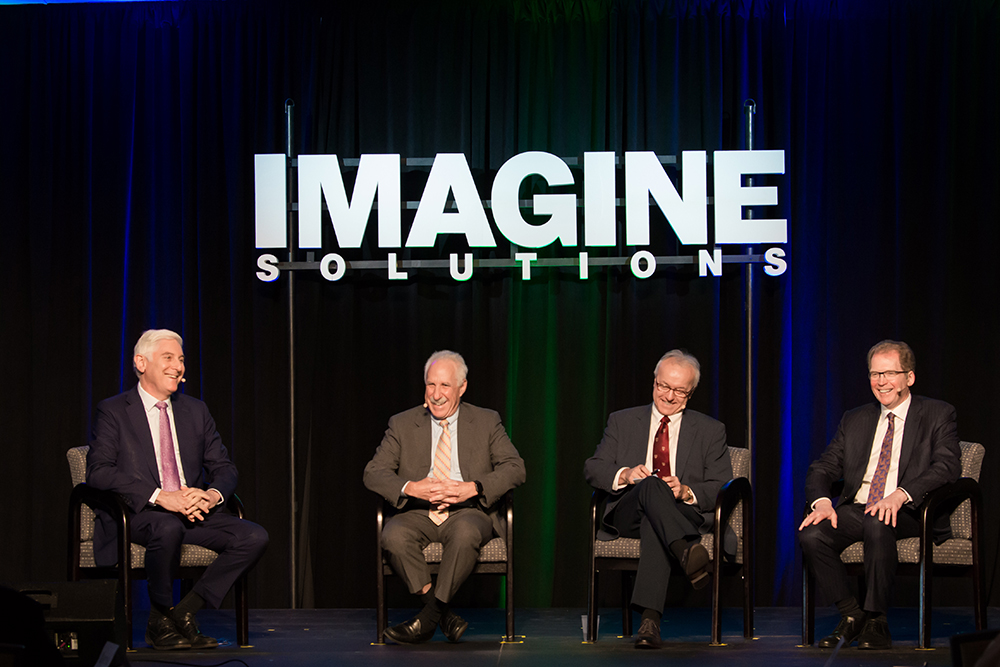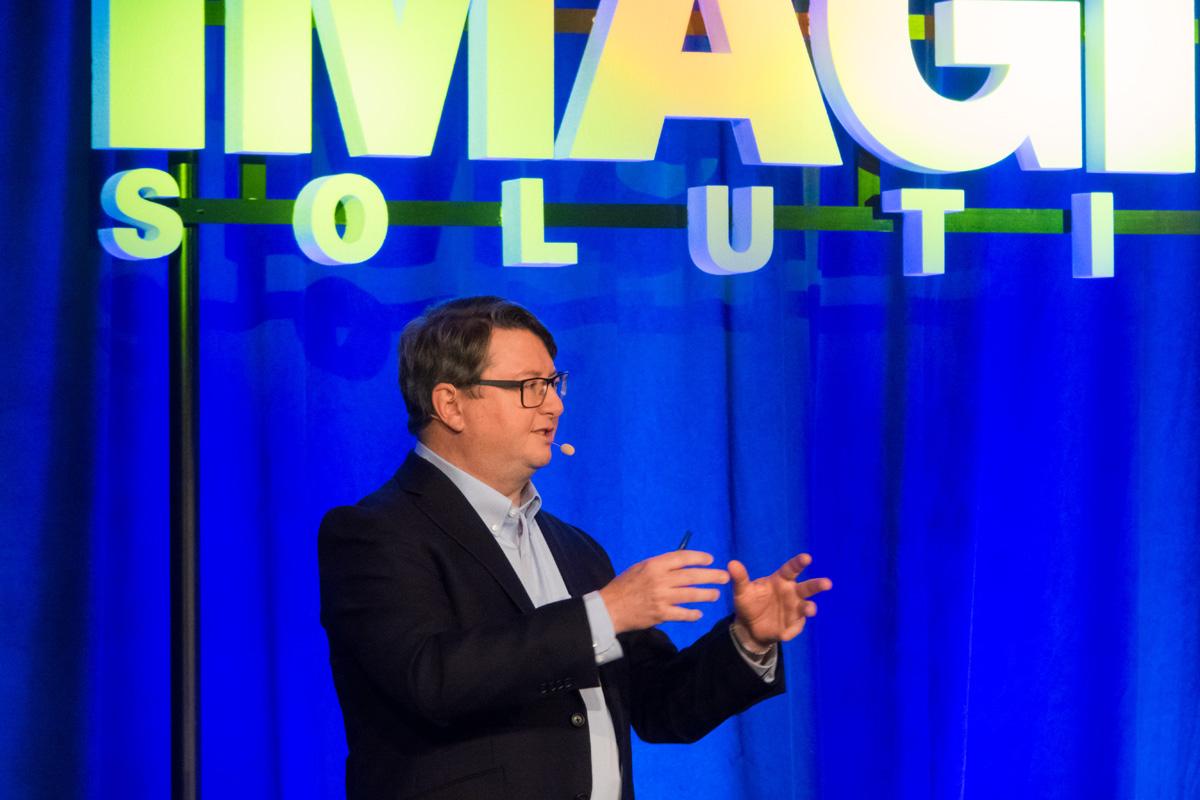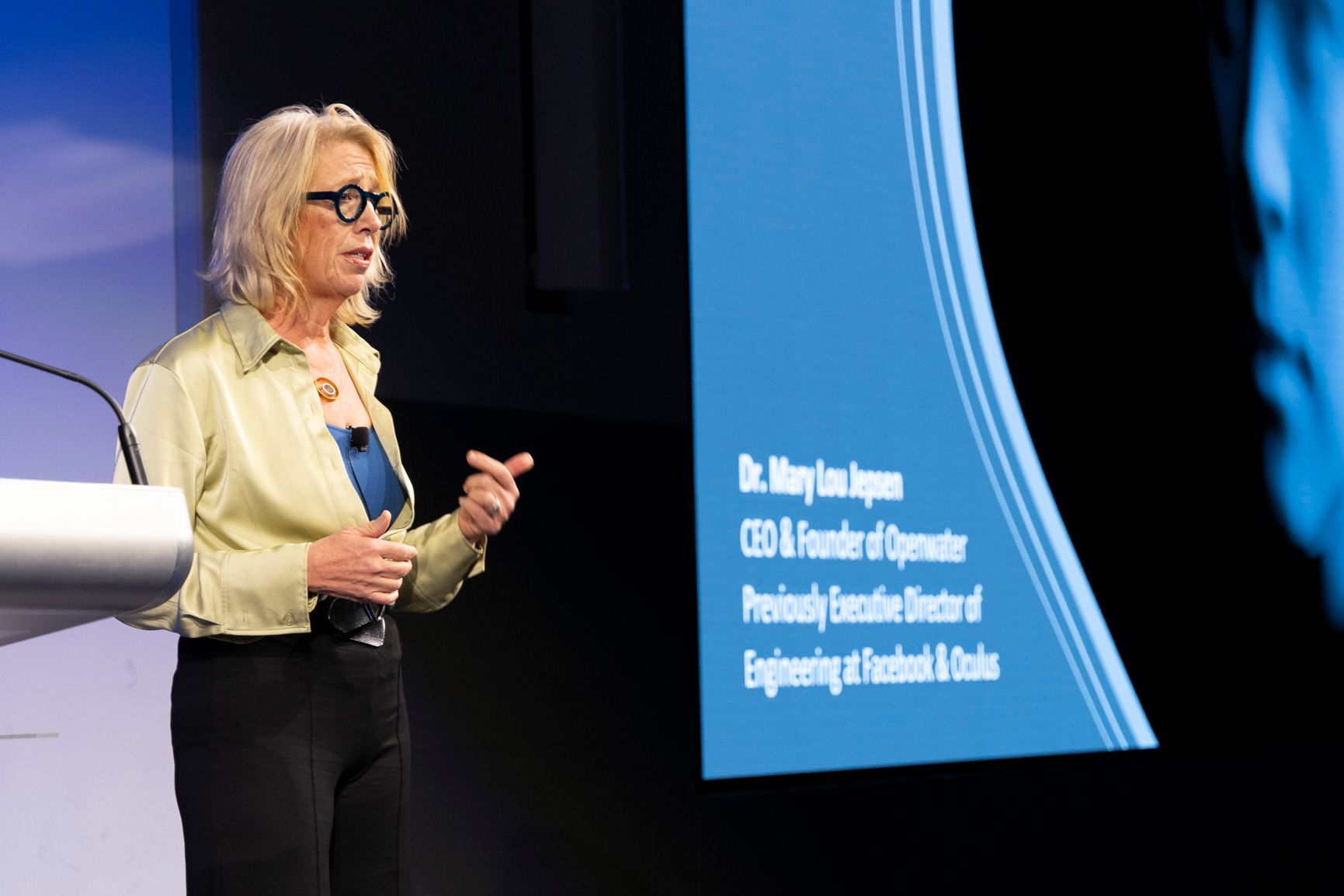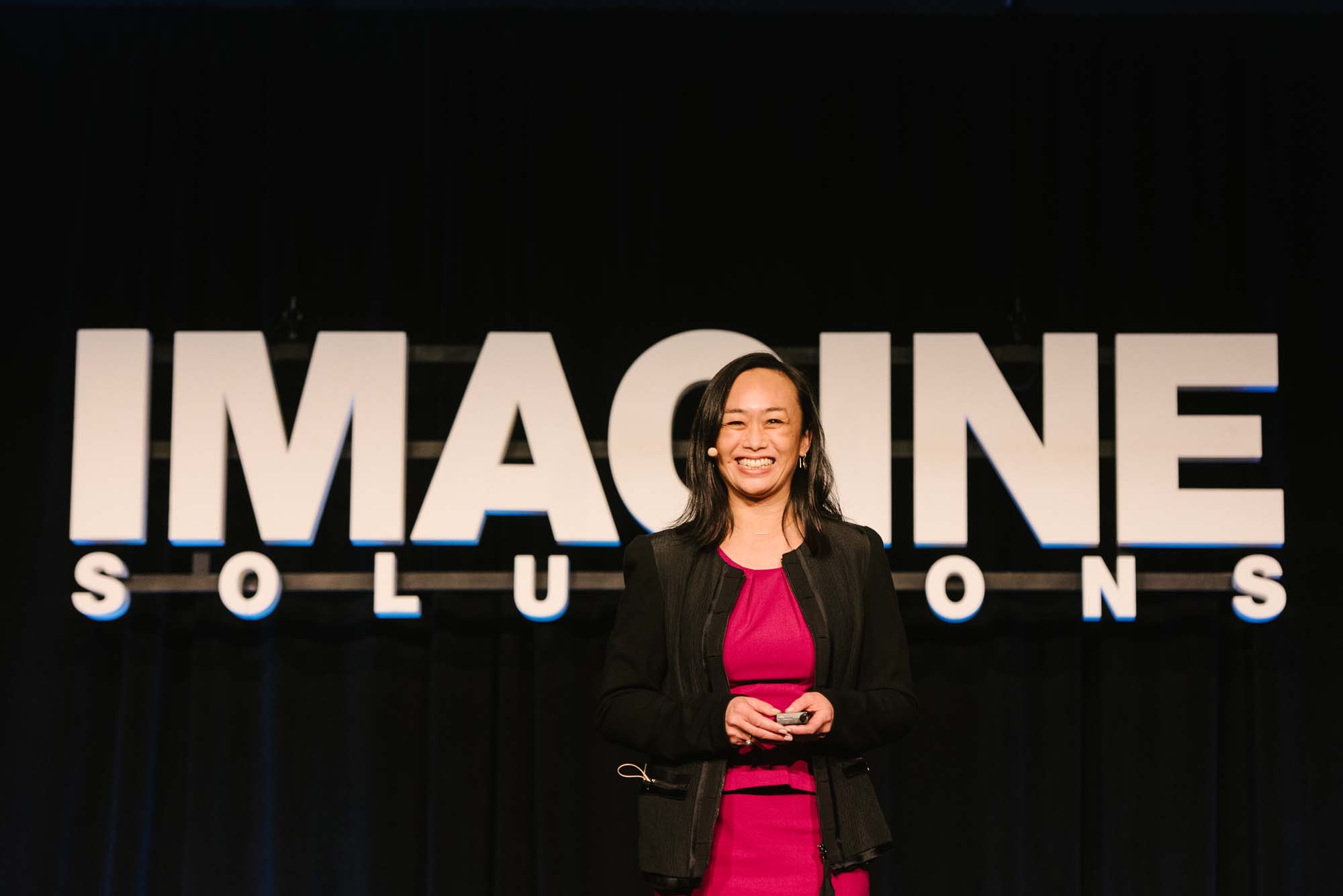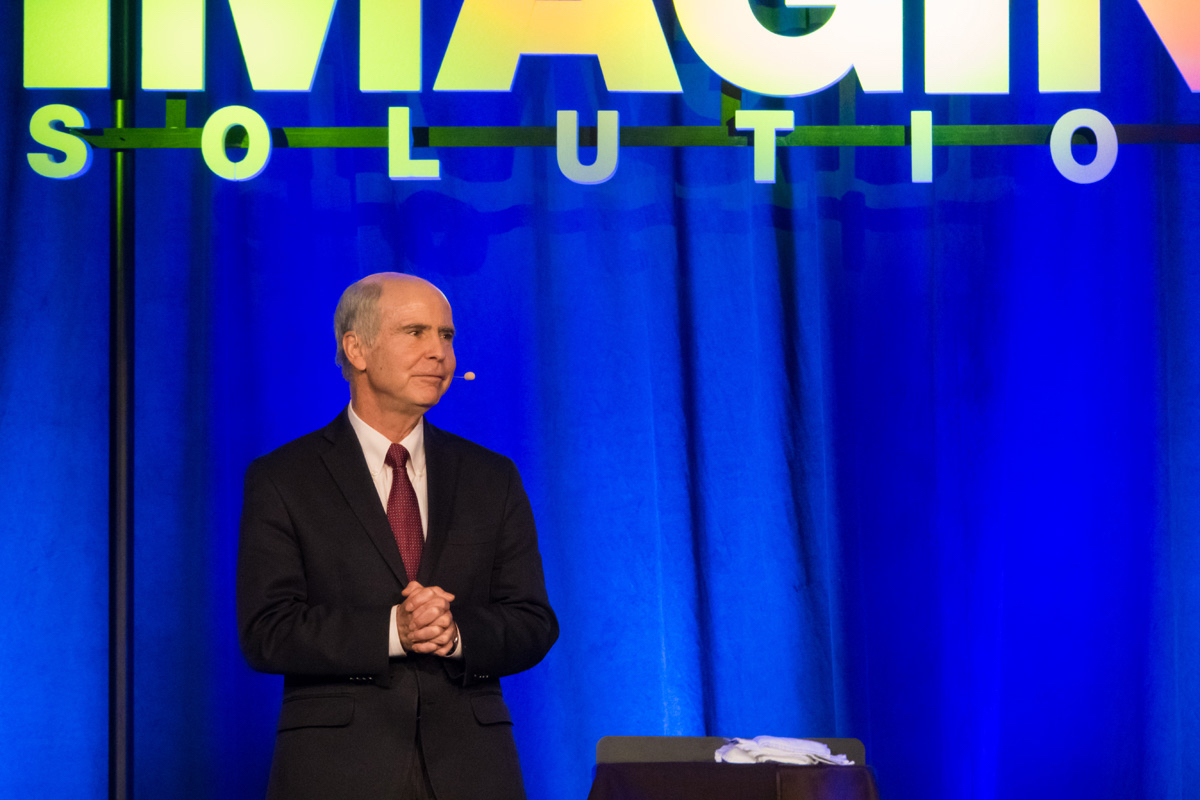A Womb with a View: Adventures in Fetal Surgery
Scott Adzick, MD, is Surgeon-in-Chief of The Children’s Hospital of Philadelphia (CHOP) and the founder and director of the Center for Fetal Diagnosis and Treatment. A true innovator in the field of fetal medicine since its inception, Dr. Adzick has dedicated his career to the pursuit of groundbreaking prenatal treatment for debilitating birth defects. He shows and describes cutting edge surgical treatments performed in the womb for life-threatening conditions such as lung tumors, twin-twin transfusions and spina bifida. Dr. Adzik describes the early days of research and the skepticism he faced in the 1980s, offers a glimpse into the future, and confirms his commitment to research as a means to offering hope for the families they treat.
00.00
switch gears a little bit now and talk about a person who is leading the way in the field of medicine and specifically in the field of fetal surgery the things that he does and his team at Children's Hospital in Philadelphia are no less than astonishing he's dr. Scott adzick he is surgeon in chief at Children's Hospital of Philadelphia he is a specialist in fetal surgery and that means working on children while they are in the womb and appropriately enough the title of his remarks today a womb with a view adventures in fetal surgery please welcome it made me laugh too dr. Scott adzick Scott [Applause] [Music]
01.15
I just observed that despite the schedule change Tyler picked the right guy for this talk because I am NOT lalala and that's for sure imagine you're an expectant mother going in for your routine 18 weeks gestation ultrasound and you're excited you want to know is it a boy or is it a girl mostly you want to know is the baby okay is the baby healthy but then you find out that the baby has a serious life-threatening birth defect that may
02.01
require fetal surgery thankfully you are referred to our team at the Center for fetal diagnosis and treatment at the Children's Hospital of Philadelphia known as chop where we provide comprehensive care for the mother carrying a baby with a birth defect I'm a pediatric and fetal surgeon and for me this is a typical day at work some life-threatening birth defects require a big operation for the mother and for the fetus open fetal surgery requires a team part of the team is shown here and there are two patients the appropriately selected sick fetus who has everything to benefit from the operation and the mother who's a healthy medical innocent bystander who has to assume some risk to help her unborn baby this is my patient viewed through a tiny 2 millimeter fetus scope the fetus is at 20 weeks gestation where term is 40
03.01
weeks so about halfway through here's the fetal leg you can see the umbilical cord the chest the face the hands the arm you can see the legs the feet the toes at 20 weeks gestation and here's the placenta which is the crucial nutritional hookup between the mother and the fetus in the beginning well the work to make fetal surgery a clinical reality is started thirty years ago and here's a story told by me and some of my colleagues at chop [Music] for most of human history the fetus has been really shrouded in mystery and multiple layers of maternal abdomen obscuring anything that was wrong with the fetus with the emergence of prenatal diagnostic techniques particularly with the advent of maternal fetal ultrasound
04.01
we could glue into the womb for the first time we could see things we'd never seen before and as those fetuses were followed it became more clear what may or may not happen to them there were a certain category of birth defects that were for the most part lethal where when the baby was born we were too late to do anything about it that was really the impetus to try to to knock on the door sooner perhaps we can treat this new group of highly selected unborn patients who have severe diseases that are progressive during the pregnancy maybe we could treat them before birth and that was a very radical and controversial concept birth defects are a big problem medically they are common one in 28 babies is born with a structural birth defect they're costly billions of dollars required for medical
05.01
treatment birth defects are merciless no parent is immune they're mysterious most causes of birth defects are unknown overlooked research in my view is underfunded and they're deadly birth defects are the leading cause of infant mortality prenatal therapy requires prenatal diagnosis whether it be pregnancy screening tests the newest of which is ni PT for non-invasive prenatal testing where you can glean fetal cells and fetal DNA from the maternal blood from a single maternal blood sample for diagnosis sophisticated fetal imaging high-resolution ultrasound fetal MRI you can do MRI fetal MRI and that's a technique that we helped develop at shop in the 90s molecular diagnostic techniques that largely sprang from the Human Genome Project so the point where most human anatomic and genetic abnormalities are now
06.00
routinely diagnosed before birth the Center for fetal diagnosis and treatment at shop was founded in 1995 with the vision the imagination of being the world's premier center for maternal fetal in neonatal care and the leader in birth defect treatment research and education this shows the unique Garbo's family special delivery unit at shop which is where we work prenatal diagnosis of the birth defect pregnancy management including possible fetal therapy the special delivery of the baby with a birth defect so that we can bring all the layers and layers of expertise that shop has to offer to the baby and while keeping the mother and baby together in the same place this is our benefactor and shop trustee lingard BOS with a mother and baby who many weeks before had undergone spina bifida surgery before birth families come from all over to our Center at chop during
07.05
the past 22 years more than 20,000 prenatal referrals from all 50 states and from more than 60 countries outside the US what are some of the birth defects that we fix before birth well here's the fetal hand at 22 weeks gestation the baby at that gestational age is smaller than my hand robbing on the unborn baby's chest to remove a life-threatening lung tumor the operation is done under deep maternal general anesthesia which also Anessa sizes the fetus a sideways lower abdominal wound is made in the mothers abdomen to expose the uterus and the uterus is opened using a specialized uterine stapling device that we invented the otherwise fatal lung tumor which is causing a heart failure in the fetus is removed the baby's chest is then closed the uterus is closed the maternal abdomen is closed the
08.02
normal lung tissue which has been squished now has sufficient space to grow like gangbusters with the baby still inside the mom the heart failure resolves the baby is born in many weeks later and can breathe normally this is Roberto the first baby at shop to have a lung tumor removed before birth in 1996 to 22 weeks gestation here he is as a healthy six month old you can tell his father wants him to be a baseball player five years of age playing t-ball 17 years of age throwing out the opening pitch at a Philadelphia Phillies spring training game in Clearwater Florida just north of here he's now a college sophomore on a baseball scholarship at the University of Texas he wants to be a professional baseball player remarkable we use photography for treatment of twin twin transfusion syndrome which is known as
09.00
TTTS the setup is here's the uterus identical twins to separate amniotic sacs there are abnormal blood vessels on the shared placenta these twins have one placenta the nutritional hookup with the mom as opposed to the usual two and there's a problem one twin because of these abnormal blood vessels on the placental surface it's too much blood develops heart failure becomes swollen with fluid develops an abundance of amniotic fluid the other twin doesn't get enough blood from the mother develops kidney failure doesn't produce amniotic fluid is known as a stuck twin because it becomes shrink-wrapped and its amniotic membranes and both twins will go on to die the way to treat this is to do two is to introduce a tiny fetus cope through the mother's abdominal wall through the uterine wall visualize the placenta and then use a
10.02
laser to perform photocoagulation to occlude the culprit blood vessels here are Ayden and Dylan both saved before birth by fetus copic laser therapy for twin twin transfusion syndrome at 20 weeks gestation spina bifida is another condition we treat before birth spina bifida affects about 1,500 babies born in the United States each year that translates to about 30 per week five per day and spina bifida repair before birth is one of the most common fetal surgery operations that we perform at chop the fetus with spina bifida has two major problems the first is shown here a part of the spinal cord and the spinal nerves protrude through an opening in the back and are damaged progressively before birth because of exposure to the toxicity of amniotic fluid most of amniotic fluid is
11.00
fetal urine which leads to nerve damage and paralysis these are children when they're older are frequently wheelchair-bound the second problem is shown here cerebral spinal fluid bathes the brain and the spinal cord and with spina bifida it pours out through this opening in the back this leads to herniation of the brain stem into the neck of the spinal canal and that interferes with cerebral spinal fluid circulation that this the fluid builds up in the brain causes hydrocephalus and brain damage and children who aren't treated before birth require a shunt tube to be placed to drain the fluid into the abdomen which is required lifelong in order to protect the delicate developing exposed spinal cord the fetal spina bifida lesion is managed and repaired before birth the uterus is opened this is the view this the spina bifida closure the various layers including the final layer which is the skin very delicate surgery for the
12.01
remainder of the pregnancy this repair will save the unborn baby for more than three months of amniotic fluid ravaging the nervous system and should also mitigate hydrocephalus and brain damage meet Callan Micah and Shawn each underwent fetal surgery to repair spina bifida at 22 to 24 weeks gestation back in 2001 although fetal surgery is not a complete cure for spina bifida look at them now displayed on my iPhone I I recorded this so I'm proud of this they're tossing the football around no evident paralysis no wheelchairs no internal shunt tube draining excess fluid from the brain healthy kids there is much more to be done which requires research one of my mentors at Harvard Medical School and when I trained at Boston Children's Hospital many years
13.00
ago dr. Judah Folkman taught me that as long as there is an unconquered disease an injury that cannot be repaired or a method of prevention that remains beyond reach we have an obligation to conduct research research represents hope and for many patients and Families hope is the best thing we have to offer we pursue our investigations so that one day we can offer more than hope we can offer health so we're committed to research as a means to offering hope to the families we treat here are some of the next breakthroughs in fetal therapy based on research my brilliant colleague at Shope darlin flake the Colca professor of pediatric surgery has been working for three decades in the laboratory to devise a treatment for the fetus with a whole variety of prenatal a diagnosed cellular deficiency diseases one of which is sickle cell anemia by
14.01
transplanting before birth healthy adult blood stem cells blood blood cell forming stem cells before birth the immunologically immature fetus early in gestation does not reject these adult stem cells the cells engraft in the in the bone marrow and take over the missing function i predict that within the next year dr. flake and his team will treat sickle cell anemia at 12 to 14 weeks gestation in this manner can you believe that a cure for sickle cell anemia is within our reach we are also poised to make a big breakthrough for the tiniest patients who are born much too early this highlights the problem of prematurity babies born at 23 weeks gestation here on the Left face very tough odds a 74% mortality rate death rate a 92% complication or morbidity rate despite all the high technology medical things
15.01
that we have at our fingertips the outlook for babies born only five weeks later is much better 8% mortality 43% complication rate we need a life saving bridge to take premature babies from 23 weeks gestation to 28 weeks gestation dr. flake and his team at chop have devised a life saving bridge in animal models a womb like environment using an experimental fetal Lam model shown schematically here on the left so follow me a fetal am way too premature to survive is connected to a bypass circuit specialized one which provides oxygen and nutrition just like the placenta with connection via the blood vessels that go into the umbilical cord and the lamb is in a sterile uterus like bio bag with amniotic fluid percolating through and on the right here is an actual fetal lamb in the artificial womb getting four
16.02
weeks of support with normal growth and development this neonatal intensive care unit of the future to support extremely premature babies will indeed be a brave new world and here's that same lamb you just saw in the last slide hopping around shortly after birth four weeks later the timeline for prenatal therapy is shown here beginning in the 80s we had open fetal surgery developed in the 1980s fetus copic surgery for like twin twin transfusion syndrome beginning in the 90s fetal summer therapy which is developing just now with the metaphoric stem cell transplantation I predict in the future we will have fetal gene therapy for single gene disorders and applied new technology and gene editing so the role of fetal therapy is growing and growing and this will include in my view the art official womb probably about two years
17.01
away from clinical applications I imagine that some of you have watched the PBS trilogy entitled twice-born storage and a special delivery unit about the work we do for the Center for fetal diagnosis and treatment at shop the television miniseries three one-hour episodes aired on PBS recently and documented the lives of these four chopped fetal surgery patients over the course of 15 months we let the outside world in to see the wonderful world inside chop here's the trailer [Music] there was a huge amount of skepticism huge [Music] these are by some of these guys these
18.01
guys are a little bit crazy gotta watch it them crazy [Music] half the audiences like this cross and the other half of the audience's their jaws down [Music] and then you'd sort of walk off the stage thinking well maybe they're right maybe we aren't crazy but we weren't we work they just told me that it looked like there was a tumor coming out from the mouth though my baby was gonna de weakness and paralysis at the knees ankles and toes this is not part of our plan like this couldn't be my baby you're talking about it's an incredibly unstable situation for the twins we're supposed to hear the heartbeat and see the babies moving and
19.01
everything was quiet we were nervous beyond imagination the diagnosis was fatal if there was no intervention surgery on your baby while you are pregnant is a very very big deal they're operating on the baby while she's still attached to me and this kids coming out but it needs to come out it can't be done many places in the world this is not amateur hour this is very serious stuff it's very important for the parents to know that there are no guarantees we're only gonna be happy and victorious if it goes this way but there's a possibility that it won't there are times where our hearts are broken we carry every single heartbreak with us to every single case one of the things that we were trying our best to do was to allow ourselves mentally to go to the areas that made us
20.00
afraid you know let's go to that for a moment that we might lose her to ignore it as a possibilities but Eve we have all these patients and their child they know even were further warned that there's something wrong with them doesn't matter he's here he made it we're driven by patient needs it's going on we're driven by trying to find solutions to those unsolved problems it's a miracle and a privilege to take care of patients who've had babies ladies of the future but what could be more compelling than a babe [Music] [Applause]
21.02
twice-born won an emmy last fall for Outstanding Science and Technology programming and Monica Lange and Bonnie Cutler were the co-directors smart hard to believe it we won an Emmy I mean at the corner each year we have a feat all family reunion for the Center for fetal diagnosis and treatment where we have a day of fun and celebration for the children this is the first year back in 1996 for there were actually in the back row more health care professionals than there are our patients and also I had brown hair and here's the 20th fetal family reunion last year at job I would like to show some of our fetal patients briefly and the theme is look at me now Addison is everything a three old little girl should be she has just got such a bright love of life and if
22.01
the Center for fetal diagnosis and treatment was not there or if we were not made aware of it Addison would not be here today people didn't know her they look at her and they can't believe it and all you can do is you sit there nice aged look at her now they're getting me now Hey look at me now [Music] [Music]
23.13
[Music] look at them now thank you very much

